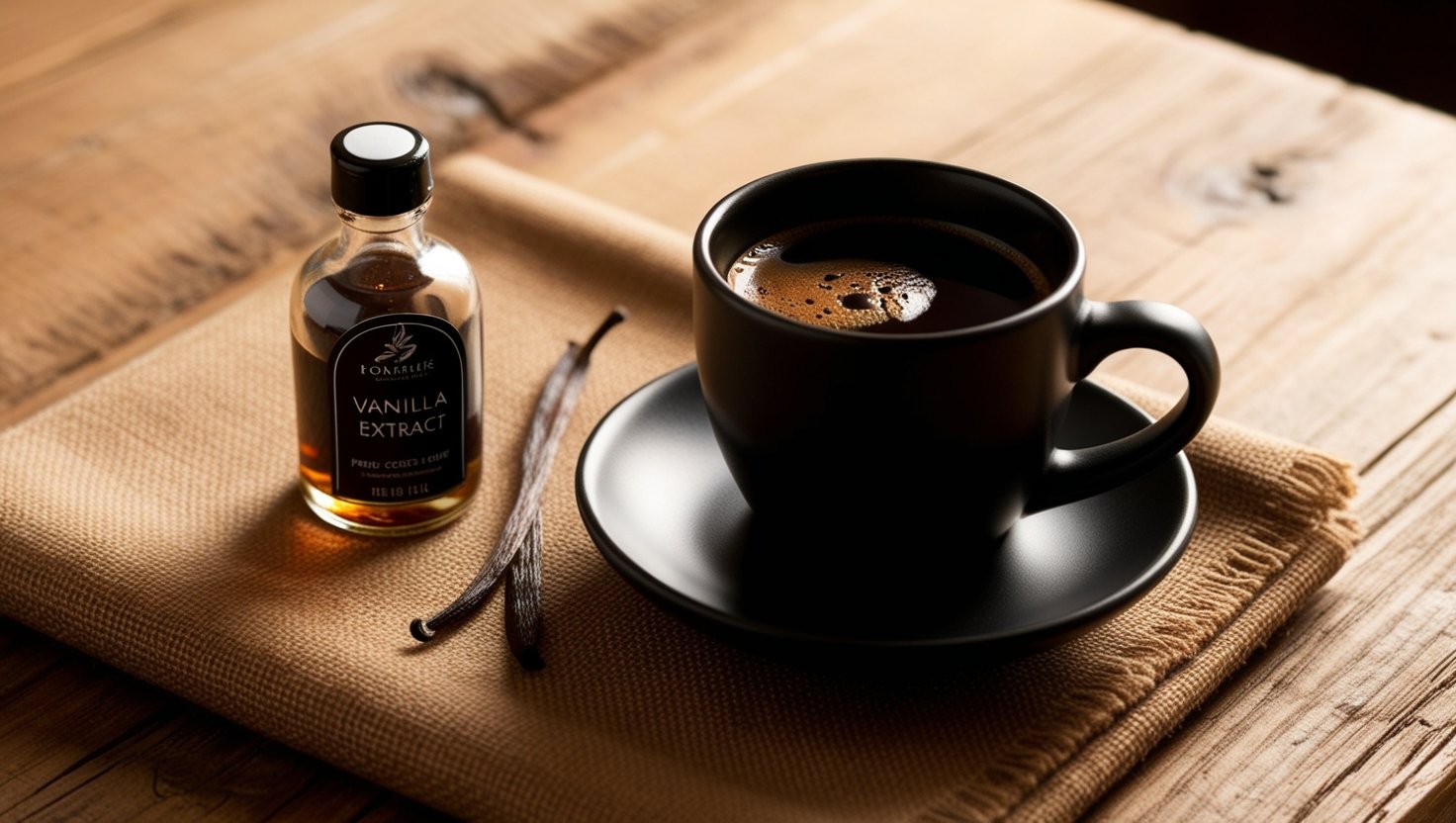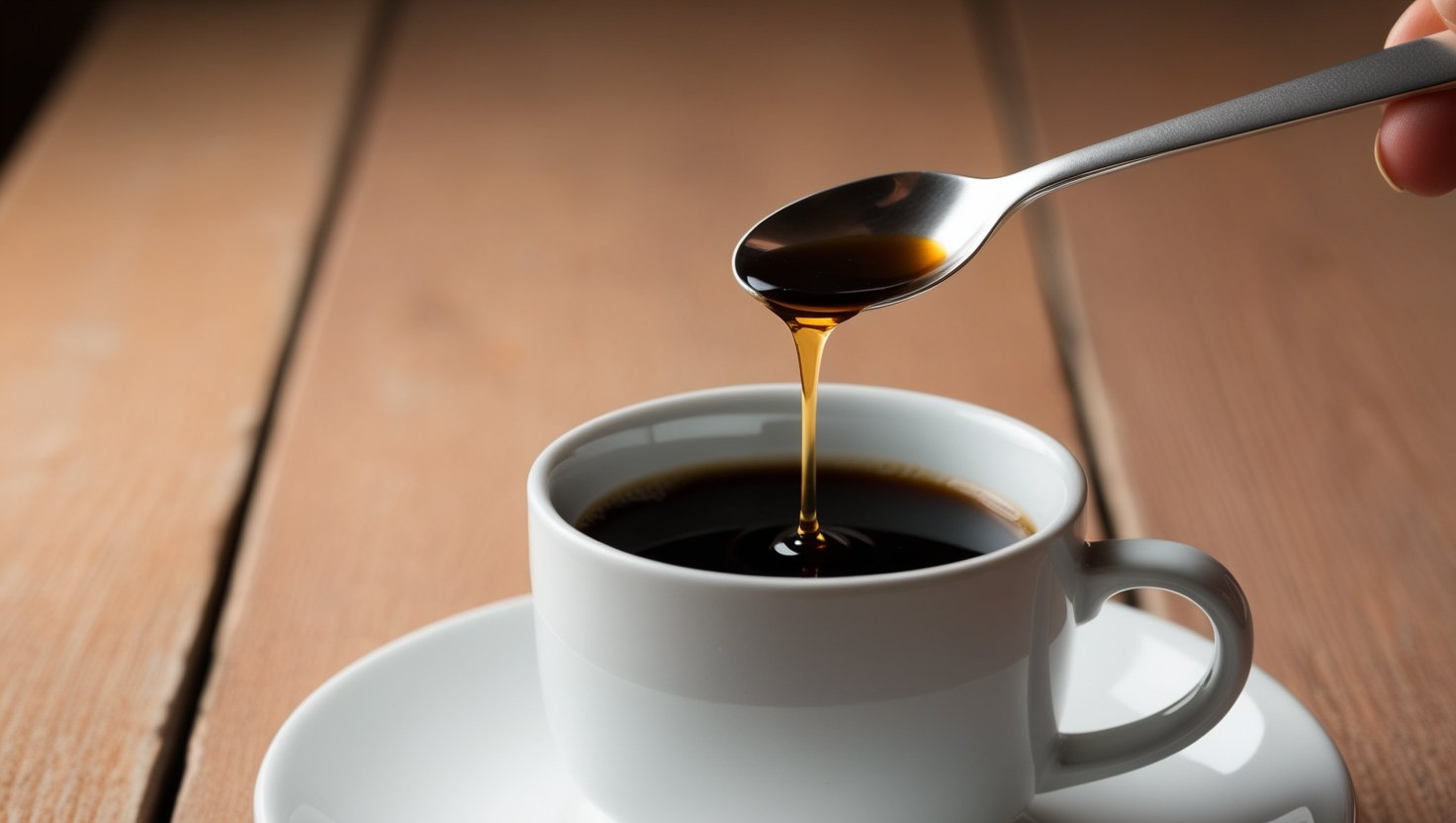Can You Put Vanilla Extract in Coffee?
A Secret Ingredient with Big Flavor

A Morning Experiment That Changed Everything
One foggy Sunday morning, Jenna, a home barista from Portland, found herself out of flavored creamer. Desperate to revive her usual vanilla-scented ritual, she reached for a dusty bottle of pure vanilla extract at the back of her spice cabinet. She hesitated for a second — wasn’t that just for baking?
Out of curiosity (and caffeine desperation), she added a few drops to her French press brew. What followed was a surprisingly mellow, aromatic cup of coffee that had all the sweetness and none of the added sugar or preservatives.
That spontaneous decision sparked a trend in her household — and soon, her entire neighborhood coffee club was hooked.
But is it safe? Does it taste good? And how exactly do you use vanilla extract in coffee?
Let’s explore.
Yes, You Can Put Vanilla Extract in Coffee — And Here’s Why You Should
Vanilla extract is not just for cakes or cookies. It’s made from vanilla beans soaked in alcohol (typically ethanol) and water to extract flavor compounds like vanillin, the molecule that gives vanilla its signature taste.
Adding a small amount of vanilla extract to your coffee can:
-
Enhance flavor without sugar
-
Complement chocolatey or nutty notes in dark roasts
-
Add complexity to plain brews
-
Make dairy-free coffee more interesting
It’s a natural and minimalist way to upgrade your cup.
How Much Vanilla Extract Should You Use?
Less is more. Vanilla extract is potent.
✅ Recommended amount:
Use 1/4 to 1/2 teaspoon per 8 to 12 oz cup of coffee. You can always adjust based on taste, roast level, or whether you’re adding milk.
Too much can overpower your brew or leave an alcohol-like taste. Start small.
What Type of Vanilla Extract Should You Use?
There are three main options:
-
Pure Vanilla Extract (Best Option):
-
Made with real vanilla beans
-
More complex, floral, and natural
-
May contain alcohol (which evaporates quickly in hot liquids)
-
-
Imitation Vanilla (Vanillin)
-
Synthetic and cheaper
-
Lacks depth
-
Safe but not ideal for coffee lovers
-
-
Alcohol-Free Vanilla Extract
-
Best for cold brew or iced coffee
-
Ideal for those avoiding alcohol
-
Pro Tip: Look for brands that list “vanilla bean extractives, water, and alcohol” — no added sugar, corn syrup, or caramel coloring.
Hot Coffee vs Iced Coffee: Does It Work in Both?
Yes — but with slight differences.
-
Hot Coffee: The warmth helps the alcohol in the extract to evaporate quickly, leaving behind smooth vanilla flavor.
-
Iced Coffee/Cold Brew: Choose alcohol-free vanilla extract, or mix it into your milk/cream first before adding to the coffee. The flavor might be more subtle but still pleasant.
Vanilla Extract vs Vanilla Syrup: What’s the Difference?
| Feature | Vanilla Extract | Vanilla Syrup |
|---|---|---|
| Ingredients | Vanilla beans, alcohol, water | Sugar, water, vanilla |
| Flavor | Intense, pure, less sweet | Sweet, dessert-like |
| Calories | 0–10 per serving | 50–100+ per serving |
| Best For | Health-conscious, keto, minimalists | Sweet drink lovers |
If you’re avoiding sugar, going low-carb, or just want a more natural coffee experience, vanilla extract is the winner.
Health Benefits (And Myths)
While vanilla extract isn’t a superfood, it may offer subtle benefits:
-
Low calorie
-
Antioxidants from vanillin
-
No sugar spikes compared to syrups
That said, it’s not a magic health drink. But for those reducing sugar intake, it’s a game-changer for coffee flavor.
Is It Safe to Use Vanilla Extract in Coffee?
Yes, in small amounts, vanilla extract is completely safe in coffee.
However, here are a few cautions:
-
Don’t drink straight extract: It’s very concentrated and contains alcohol.
-
Watch the alcohol content: For kids, pregnant individuals, or those avoiding alcohol, opt for alcohol-free versions.
-
Avoid artificial brands with additives.
Creative Ways to Use Vanilla Extract in Coffee
Want to get fancy? Try these:
-
Vanilla Cinnamon Latte (No Syrup)
-
Brew your coffee
-
Add 1/2 tsp vanilla extract + 1/4 tsp cinnamon + milk of choice
-
Froth if desired
-
-
Vanilla Cold Foam Iced Coffee
-
Blend 1/4 cup milk with 1/4 tsp vanilla extract and a pinch of salt
-
Pour over iced coffee for a Starbucks-style treat
-
-
Keto Vanilla Butter Coffee
-
Brew dark roast coffee
-
Blend with 1/2 tsp vanilla extract + 1 tsp MCT oil + 1 tsp ghee
-
The Camping Hack: Vanilla in the Wild
For outdoor coffee lovers, vanilla extract can be your secret camp kitchen weapon.
A tiny drop in your percolator or AeroPress brew can transform even the most rugged black coffee into something comforting. Best part? No need to carry sugar, flavored creamers, or bulky syrups into the woods.
As one campfire Redditor said:
“It’s like a bear hug in a cup — but without the bear.”
What Coffee Types Pair Best with Vanilla Extract?
Some roasts and brew styles work better than others.
✅ Best Pairings:
-
Medium roast Colombian
-
Ethiopian Yirgacheffe
-
Guatemalan dark roast
-
Espresso (in lattes or americanos)
-
French press
🚫 Avoid:
-
Super fruity coffees (like Kenyan or natural-process)
-
Very light roasts
Why? The boldness of vanilla extract complements earthy, chocolatey, or nutty notes better than acidic fruit-forward profiles.
Coffea Alchemy’s Take
At Coffea Alchemy, we love exploring new ways to help people fall in love with coffee again — one simple experiment at a time. Whether you’re at home, in a campervan, or simply in a creative rut, adding a drop of vanilla extract is a low-risk, high-reward move that reminds us why coffee is both ritual and playground.
Final Thoughts: Is Vanilla Extract the Next Big Thing in Coffee?
Using vanilla extract in coffee is a simple, inexpensive, and healthier alternative to sugary syrups and artificial creamers. It elevates your daily cup with just a few drops and invites exploration.
Next time you’re staring at a plain brew, wondering how to make it feel special, try Jenna’s experiment. Who knows — it might become your new favorite ritual.
So… have you ever added vanilla extract to your coffee?
Related Post
Our newsletter
Subscribe to our weekly newsletter & keep up with our latest recipes and organized workshops. You can unsubscribe at any time.

